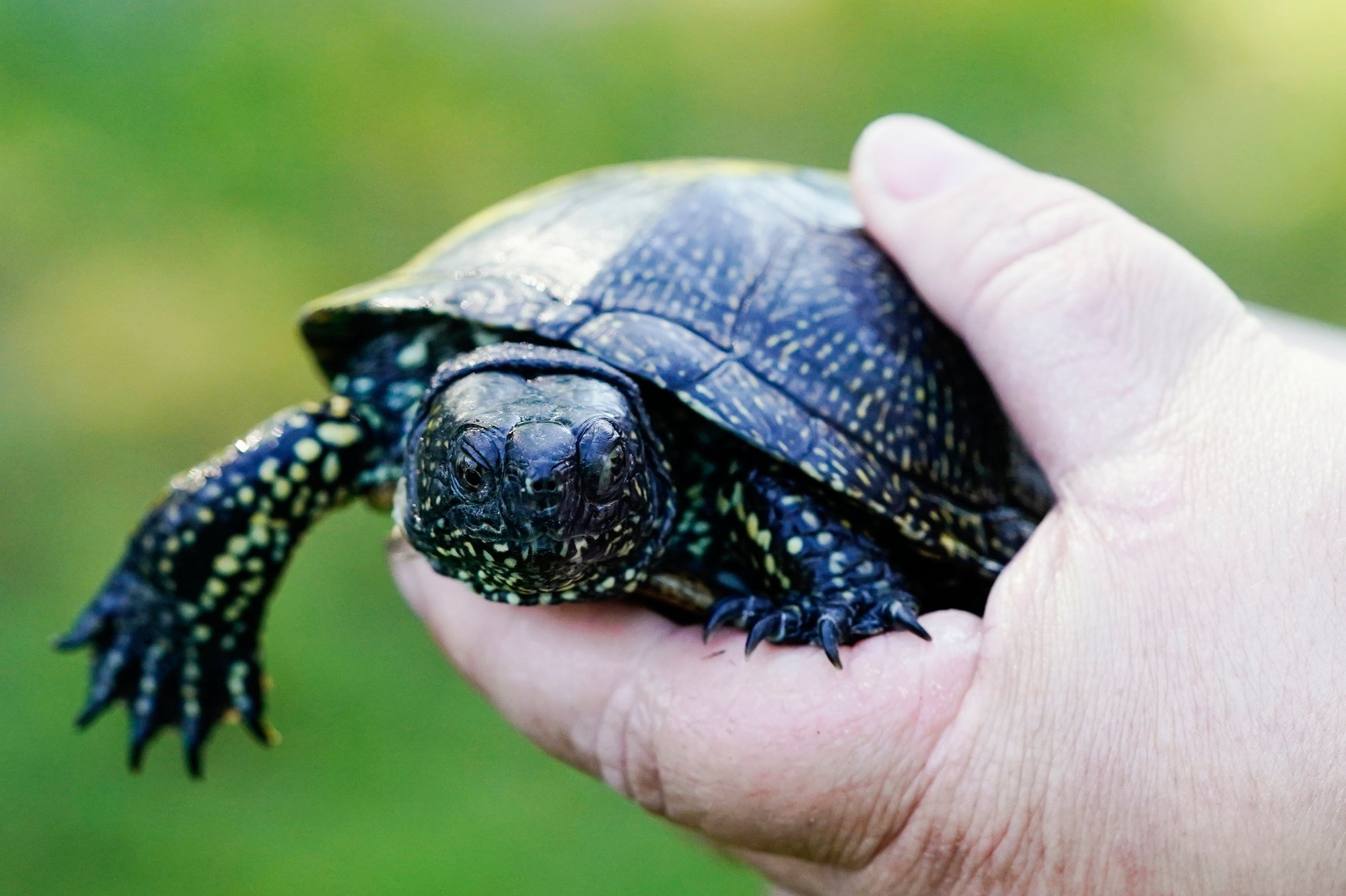
Turtle, tortoise, terrapin - history of the words and which came first ahead of World Turtle Day
- Turtles, tortoises and terrapins all belong to the taxonomic order Testudines, originating in the Latin word for ‘shell’
- World Turtle Day, on May 23, raises awareness of the plight of those turtle species that have experienced threat of endangerment or extinction
Turtles, tortoises and terrapins all belong to the taxonomic order Testudines, distinguished from all other vertebrates by their body being encased in a bony shell extending from their rib cage, comprising carapace on top and plastron on the bottom.
The name Testudines is based on the Latin word testudo, for “tortoise”, originating in the Latin testa, “shell”. Modern usage tends to have turtle as the term for all in the order, with tortoise referring to the slow-moving terrestrial species.
The tortoise, in fact – as in the fable – came first, with origins in the late popular Latin tortūca, commonly believed to be a derivative of the Latin tortus, “twisted”, in reference to the crooked feet of the south European species.
The name Tortuga, documented in 15th century writings, then became tortuce/tortuse, based on the French tortue, and eventually settled on one of the many variant spellings circulating in the late-16th century, tortoise.

This word encompassed all species: land-, marsh-, river- and marine tortoises. The latter, with feet compressed into flippers or paddles, are now commonly distinguished as turtles.
The origin of the word turtle requires a taxonomic leap to the class Aves, specifically the turtle dove – a dove of the genus Turtur, noted for its graceful form, and affection for its mate.
This was what turtle in English first referred to, the word deriving from the Latin turtur, an echoic name, imitating the bird’s cooing. This developed into the Old English turtla (masculine) and turtle (feminine), and various forms in Middle English including turtul and turtyle.
How the Chinese legend of pangolins came true – but in a terrible way
English writers, encountering carapaced reptiles on their 17th century voyages, started using the word turtle for them, possibly influenced by the existing word for doves. A 1676 translation from French recounts: “He took a Ship-board […] fourty Parrots, many Tortels, and many other Animals strange to our World.”
Meanwhile, the word terrapin entered 17th century English from the Virginia Algonquian tōrəp, for the small North American turtles of fresh or brackish water encountered there.
The French tortue came from the Late Latin tartarucha, which was clipped from the phrase bestia tartarucha “beast of Tartarus”. Tartarus is the infernal abyss for the torment of the wicked in Greek mythology.
The orange’s origins: its journey from East to West and how its name evolved
In reality, some turtle species have experienced threat of endangerment or extinction due to tortoiseshell, turtle meat and eggs being valued as artefacts, food and medicine, as well as loss of habitat – an irony, given their symbolic meaning of longevity in many cultures.
World Turtle Day on May 23 raises awareness of their plight.

